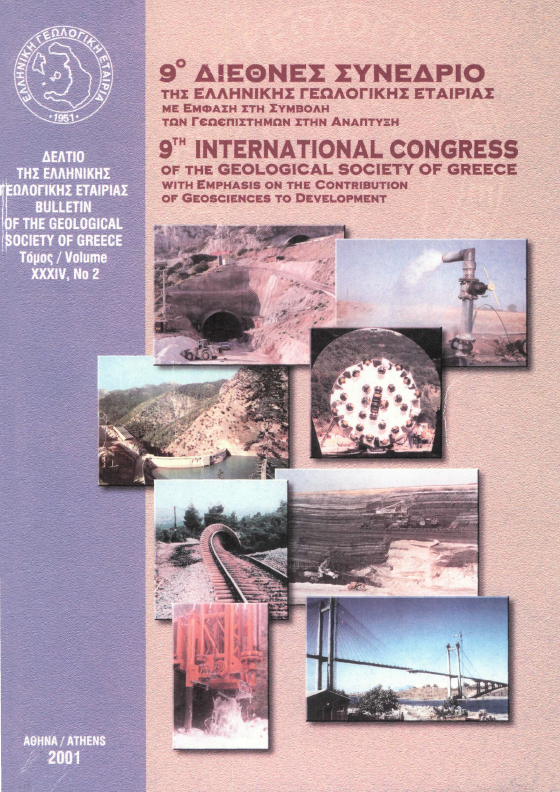Palaeocurrent directions as an indicator of Pindos foreland evolution (central and southern part), Western Greece
Résumé
In order to estimate the palaeoflow direction of the submarine fans, deposited in the Internal Ionian subbasin of the Pindos Foreland, fifty-one positions along the sub-basin were selected and measurements of palaeocurrents indicators such as flute and groove marks were taken. In the studied area the main palaeoflow direction of turbidites was axial, from south to north in the southern part, and from north to south in the northern part. A minor westward palaeoflow direction is also present. These palaeoflow directions were influenced mainly by the regional tectonic activity, such as internal thrusting (Gavrovo Thrust) and differential activity of the Pindos Thrust which subdivided Pindos foreland into narrow linear sub-basins.
Article Details
- Comment citer
-
VAKALAS, J., ANANIADIS, G., MPOURLOKAS, J., POULIMENOS, D., GETSOS, K., PANTOPOULOS, G., AVRAMIDIS, P., ZELILIDIS, A., & KONTOPOULOS, N. (2018). Palaeocurrent directions as an indicator of Pindos foreland evolution (central and southern part), Western Greece. Bulletin of the Geological Society of Greece, 34(2), 785–791. https://doi.org/10.12681/bgsg.17701
- Rubrique
- Sedimentology

Ce travail est disponible sous licence Creative Commons Attribution - Pas d’Utilisation Commerciale 4.0 International.
Authors who publish with this journal agree to the following terms:
Authors retain copyright and grant the journal right of first publication with the work simultaneously licensed under a Creative Commons Attribution Non-Commercial License that allows others to share the work with an acknowledgement of the work's authorship and initial publication in this journal.
Authors are able to enter into separate, additional contractual arrangements for the non-exclusive distribution of the journal's published version of the work (e.g. post it to an institutional repository or publish it in a book), with an acknowledgement of its initial publication in this journal. Authors are permitted and encouraged to post their work online (preferably in institutional repositories or on their website) prior to and during the submission process, as it can lead to productive exchanges, as well as earlier and greater citation of published work.








